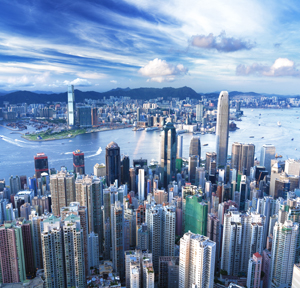Real Estate
Hong Kong's Property Investment Market Volumes Rebound Post-Cooling Measures - Data

After Hong Kong’s authorities acted to cool red-hot prices last year, data shows a sharp rebound in the jurisdiction’s real estate market, according to Cushman & Wakefield, the property services firm.
After Hong Kong’s authorities acted to cool red-hot prices last year, data shows a sharp rebound in the jurisdiction’s real estate market, according to Cushman & Wakefield, the property services firm.
Second-quarter investment volume totalled HK$22.7 billion ($2.93 billion) in the second quarter of 2014, surging by 61 per cent quarter-on-quarter. First-half investment volume across the five major property sectors including hotels stood at a total of HK$36.8 billion, up from HK$26.9 billion in in the second half of 2013 or an increase of 37 per cent.
Hong Kong, along with densely-populated Singapore, has sought to curb strong property prices in recent years, concerned over the risks that bank leverage might give rise to, as well as containing political pressures that red-hot prime markets can cause. Hong Kong's position is complicated by its pegged exchange rate to the dollar, which means its asset markets are sensitive to changes in US monetary policy. (See an example here.)
“The rebound in investment volume in the second quarter was driven by investment in office properties, where the sale of One Bay East - East Tower to Citi for a record-breaking HK$5.43 billion was accompanied by another large en bloc sale in Wong Chuk Hang (Cheung Kong’s project at 41 Heung Yip Road in Aberdeen). Office investment was also highlighted by purchases by end-users and the return of more long-term investors making purchases in Kowloon East and other non-core locations,” the report said.
It continued: “Investors have grown accustomed to the cooling measures, leading to stable investment in retail properties. There is a growing focus on non-core properties and emerging areas where upside potential is greater, especially in the midst of slower retail sales growth and easing rents in prime locations.”
Kent Fong, executive director, investment – Hong Kong, said: “More investors and owner-occupiers have adapted to the cooling measures and are making purchases for the longer-term. Rents for most properties are stable and interest rates remain low, meanwhile supply of quality assets is limited. Capital values have been resilient to the cooling measures and recent momentum in the residential sector, not to mention some record-breaking purchases in Kowloon East, is boosting investors’ confidence.”
As the first half of 2014 came to a close, residential sales reached nearly 6,000 units in June, the highest monthly total since the introduction of Double Stamp Duty. Sales showed a steady improvement since April and after slight relaxation of DSD in May, the report said.
The data highlighted how, despite the cooling measures, some prices are still setting records, such as in the New Territories.
“A new house in Tsuen Wan West transacted at HK$55,889 per square foot, while a flat at Mayfair by the Sea in Tai Po sold for HK$36,132 per square foot. Luxury residential prices dropped by 2.9 per cent in the first half of 2014, but their decline has softened in recent months on the back of more stable demand, the report said.
